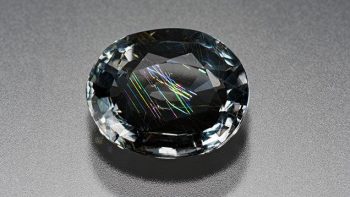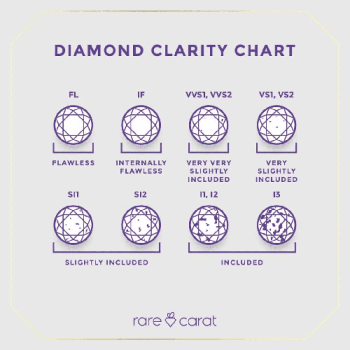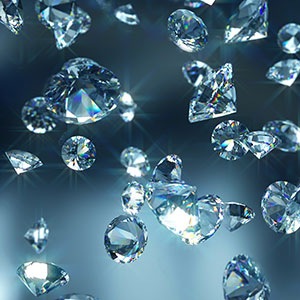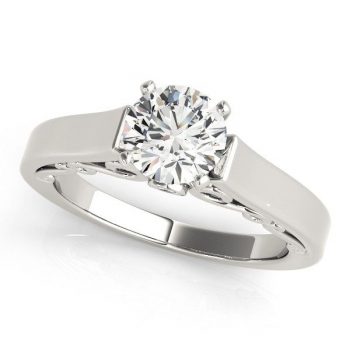People usually think that diamonds are one of the rarest gemstones in the world. They aren’t. And it isn’t close. Diamonds are actually one of the more abundant gems in the world. It is just that a small percentage of them are desirable enough for jewelry. There are many gems that are rarer than diamond. In this post, we will discuss the 10 rarest gemstones in the world. Consequently, they are also some of the most expensive stones in the world as well. This list comes with a caveat though. There could be unknown deposits of these stones that would remove them from this list.
Why Are Some Gemstones Rarer Than Others?
Gemstones vary in rarity due to several factors. One key element is the gemstone’s abundance in nature. Some gemstones are found in limited quantities, making them rare and highly sought after by collectors and enthusiasts. Another factor is the difficulty in extracting the gemstone from the earth, as some require complex mining processes or are found in remote locations, adding to their scarcity. Additionally, the demand for certain gemstones plays a role in their rarity, with popular gems becoming scarcer as their popularity increases.
The uniqueness of a gemstone also contributes to its rarity. Gems with exceptional color, clarity, and size are considered more valuable and therefore rarer. Gemstones that exhibit rare phenomena such as color-changing or asterism are highly coveted for their distinctiveness. Furthermore, the quality of a gemstone can affect its rarity, with flawless specimens being harder to come by than those with visible imperfections. These factors combine to create a hierarchy of rarity among gemstones, with some commanding significantly higher prices due to their scarcity.
In conclusion, the rarity of gemstones is a complex interplay of factors including abundance, extraction difficulty, demand, uniqueness, and quality. Understanding why certain gemstones are rarer than others can provide insight into their value and desirability in the world of gemstone collecting and jewelry making. Whether for investment purposes or personal enjoyment, the rarity of gemstones adds to their allure and mystique, making them prized possessions for many.
The 10 Rarest Gemstones On The Planet
Alexandrite
Alexandrite is a rare and valuable gemstone known for its unique color-changing properties. This gemstone belongs to the chrysoberyl family and displays a remarkable shift in color from green in daylight to red or purplish-red under incandescent light. The distinct phenomenon of alexandrite’s color change is due to the presence of chromium in its crystal structure.
In addition to its mesmerizing color change, alexandrite is also valued for its exceptional hardness, scoring 8.5 on the Mohs scale. This makes it a durable gemstone suitable for use in various types of jewelry. The gemstone’s clarity and transparency further enhance its beauty, making it highly sought after by collectors and enthusiasts alike.
Despite its popularity and desirability, alexandrite is considered one of the rarest gemstones in the world. The scarcity of alexandrite can be attributed to its limited geographical sources, with significant deposits found in countries like Russia, Brazil, and Sri Lanka. The combination of its rarity, color-changing properties, and durability makes alexandrite a prized possession for those fortunate enough to own this exquisite gemstone.

Red Beryl (Bixbite)
Red beryl, also known as bixbite or red emerald, is a rare gemstone with a striking red color. It belongs to the beryl mineral family, which also includes emerald and aquamarine. Red beryl is characterized by its vibrant red hue, ranging from pinkish-red to deep red, making it highly sought after by collectors and gem enthusiasts.
In terms of physical properties, red beryl is a beryllium aluminum silicate mineral with a hardness of 7.5 to 8 on the Mohs scale, making it quite durable and suitable for jewelry. It has a refractive index of 1.564 to 1.572 and a specific gravity of 2.66 to 2.70. Red beryl is typically found in hexagonal crystal shapes and can exhibit exceptional clarity and brilliance when cut and polished.
The red beryl being one of the rarest gemstones can be attributed to several factors, including its limited geographical distribution and the specific geological conditions required for its formation. Most red beryl deposits are found in the Wah Wah Mountains of Utah, USA, making it one of the rarest gemstones in the world. The combination of its unique color, scarcity, and high demand contributes to the high value and desirability of red beryl among gemstone connoisseurs.
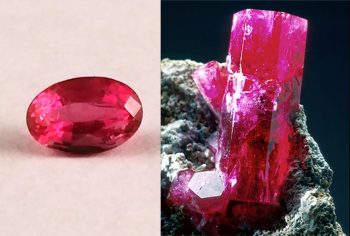
Painite
Painite is a rare borate mineral that was first discovered in Myanmar in the 1950s. It is known for its striking reddish-brown to orange color and exceptional hardness, ranking 8 on the Mohs scale. Painite also exhibits strong pleochroism, meaning it can show different colors when viewed from different angles, adding to its allure.
In addition to its vibrant color and hardness, painite’s rarity is attributed to its limited known sources. The mineral is found in only a few locations worldwide, with Myanmar being the primary source. Its scarcity in nature, combined with high demand from collectors and gem enthusiasts, has made painite one of the rarest gemstones in the world. This exclusivity has driven up its value significantly in the gem market.
Despite its rarity, painite continues to captivate gemstone enthusiasts and collectors alike due to its unique combination of color, hardness, and scarcity. Its distinct beauty and limited availability make it a prized addition to any gem collection, further solidifying its status as one of the most sought-after gemstones globally.
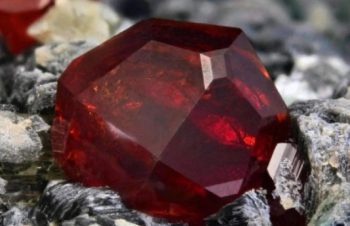
Benitoite
Benitoite is a rare blue barium titanium silicate mineral that was first discovered in San Benito County, California in 1907. It is renowned for its striking blue color, often described as sapphire blue or indigo blue. The gemstone is typically found in transparent to translucent crystals that can exhibit intense fluorescence under ultraviolet light, adding to its allure.
In terms of physical properties, Benitoite has a Mohs hardness of 6 to 6.5, making it relatively durable for jewelry purposes. Its refractive index ranges from 1.757 to 1.804, giving it a high level of brilliance and sparkle. The gemstone is also pleochroic, meaning it can display different colors when viewed from different angles, adding to its visual interest.
The rarity of Benitoite can be attributed to several factors. Its limited geographical occurrence in California, combined with the small size of the gem-quality crystals, contributes to its scarcity. Additionally, the strict regulations on mining in the area where Benitoite is found further restrict the availability of this gemstone. These factors, along with its unique color and physical properties, make Benitoite a highly sought-after and prized gemstone among collectors and jewelry enthusiasts.
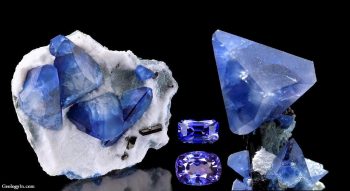
Tanzanite
Tanzanite is a rare and precious gemstone that was discovered in Tanzania in 1967. It is a blue to violet variety of the mineral zoisite and is renowned for its captivating color, which can vary from deep blue to vibrant violet depending on the lighting conditions. Tanzanite is often heat-treated to enhance its color and clarity, making it even more desirable to collectors and jewelry enthusiasts.
In terms of physical properties, tanzanite is relatively soft compared to other gemstones, with a hardness of around 6.5 on the Mohs scale. It has a vitreous luster and is pleochroic, meaning it can display different colors when viewed from different angles. Tanzanite is typically found in prismatic crystals that can be transparent to translucent, allowing light to pass through and showcase its beautiful hues.
The rarity of tanzanite can be attributed to its single known source in the Merelani Hills of Tanzania. The limited geographical area where tanzanite is found, combined with the fact that the gemstone is only formed under specific geological conditions, contributes to its scarcity. Additionally, tanzanite is believed to be a thousand times rarer than diamonds, adding to its allure and value in the world of gemstones.
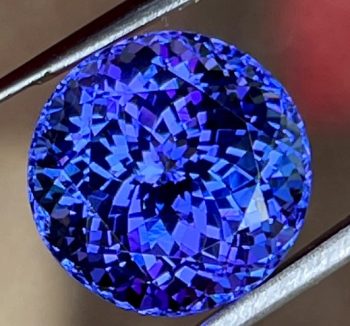
Grandidierite
Grandidierite is a rare mineral first discovered in Madagascar in 1902. It is known for its striking blue-green color and exceptional transparency. This gemstone has a hardness of 7 to 7.5 on the Mohs scale. This makes it quite durable and suitable for jewelry use. Its crystal structure is orthorhombic, giving it a unique appearance when cut and polished.
One of the reasons grandidierite is so rare is due to its limited geographical occurrence. It is primarily found in Madagascar, with few other scattered deposits in countries like Sri Lanka and Namibia. The difficulty in mining and extracting this mineral further contributes to its scarcity in the market. Additionally, its specific chemical composition, which includes aluminum, boron, and magnesium, adds to the challenge of finding sizable and high-quality grandidierite specimens.
Despite it being one of the rarest gemstones, grandidierite has gained popularity among gemstone collectors and enthusiasts for its beauty and uniqueness. Its vibrant color and exceptional clarity make it a prized addition to any gem collection. Due to its scarcity and increasing demand, grandidierite has become highly sought after in the jewelry industry, fetching high prices for fine specimens.
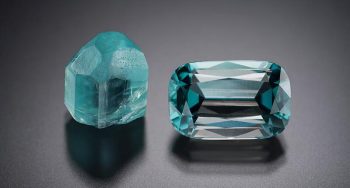
Taaffeite
Taaffeite is a rare gemstone that was first discovered in 1945 by gemologist Richard Taaffe. It is known for its stunning color range, including shades of purple, mauve, and pink. Taaffeite is a beryllium aluminum oxide mineral and is classified as a rare variety of gemstone due to its scarcity in nature.
One of the key physical properties of taaffeite is its exceptional hardness, measuring around 8 on the Mohs scale. This makes it a durable gemstone suitable for use in jewelry. Additionally, taaffeite displays pleochroism. This means it can exhibit different colors when viewed from different angles, adding to its allure and beauty.
Taaffeite’s rarity can be attributed to several factors. Firstly, its limited geographical occurrence contributes to its scarcity. The gemstone is primarily found in alluvial deposits in Sri Lanka and a few other locations in Southeast Asia. Furthermore, the difficulty in identifying taaffeite due to its similarity in appearance to other gemstones adds to its elusive nature. Consequently, it is highly sought after by collectors and enthusiasts alike.
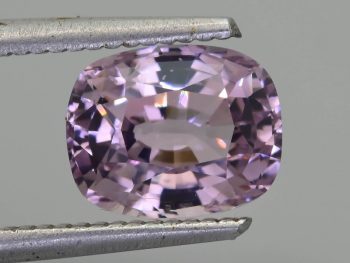
Jadeite
Jadeite is a rare and highly prized mineral known for its stunning green color. It is a type of jade, a mineral that has been revered for centuries in many cultures around the world. Jadeite is a pyroxene mineral with a monoclinic crystal system, and its green color comes from traces of chromium within its structure.
One of the key physical properties of jadeite is its exceptional toughness. It is one of the toughest gemstones, making it highly resistant to breakage and chipping. Jadeite also has a smooth, vitreous luster that adds to its beauty. Its hardness ranges from 6.5 to 7 on the Mohs scale, making it durable enough for use in jewelry and carvings.
Jadeite’s status as one of the rarest gemstones can be attributed to several factors. Its formation requires specific geological conditions, including high-pressure metamorphism of serpentine rocks. Additionally, the presence of the right elements like sodium, aluminum, and silicon is crucial for jadeite to form. Jadeite is very scarce and has high demand. As a result, genuine jadeite can command high prices in the market, especially pieces of exceptional quality and color.
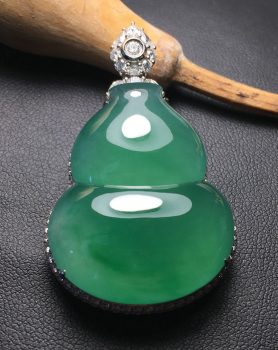
Demantoid Garnet
Demantoid garnet is a rare and valuable gemstone known for its vibrant green color and high brilliance. It belongs to the garnet family and is recognized for its dispersion, which gives it exceptional fire and sparkle. Demantoid garnet is also distinguished by its unique horsetail inclusions. These are fine, hair-like inclusions that add to its beauty and value.
In terms of physical properties, demantoid garnet has a hardness of 6.5 to 7.0 on the Mohs scale. This makes it suitable for everyday wear in jewelry. Its refractive index ranges from 1.880 to 1.889, contributing to its impressive brilliance and sparkle. The gemstone typically forms in a variety of shapes and sizes. However, the most prized specimens exhibiting a vivid green color and excellent clarity.
Demantoid garnet is considered one of the rarest gemstones due to several factors. Its scarcity is partly attributed to its specific geological conditions for formation, which are not commonly found. Additionally, the gemstone’s popularity among collectors and jewelry enthusiasts has further increased its rarity. The combination of its striking appearance, exceptional brilliance, and limited availability makes demantoid garnet a highly sought-after gemstone in the world of jewelry.
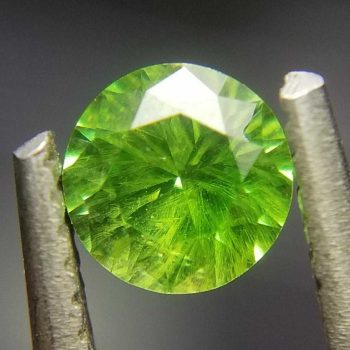
Musgravite
Musgravite is one of the rareest gemstones that belongs to the taaffeite family. It was first discovered in 1967 in the Musgrave Ranges of South Australia. This gemstone is known for its rarity and exceptional hardness, ranking 8.5 on the Mohs scale. Its color can vary from green to grayish purple, making it a unique and sought-after gem by collectors and enthusiasts.
In addition to its rarity, musgravite possesses remarkable physical properties. It has a high refractive index, which gives it a brilliant sparkle when cut and polished. Musgravite is also known for its strong pleochroism, meaning it can display different colors when viewed from different angles. These distinctive characteristics make musgravite a prized gemstone among connoisseurs and gemstone lovers worldwide.
The scarcity of musgravite can be attributed to its limited sources and the difficulty in mining this precious gem. There are only a few known locations where musgravite can be found. This, coupled with the challenges of extraction and the gem’s popularity in the jewelry industry, musgravite remains one of the rarest gemstones in the world. Its unique combination of beauty, hardness, and scarcity continues to fascinate gemstone enthusiasts and collectors alike.
